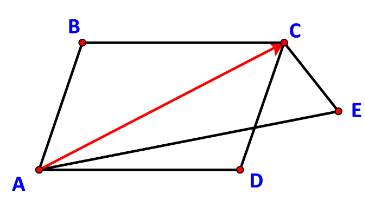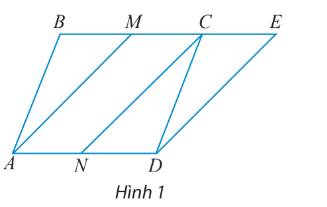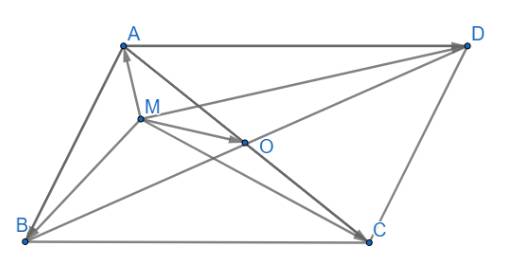Chứng minh:
a) Nếu ABCD là hình bình hành thì \(\overrightarrow {AB} + \overrightarrow {AD} + \overrightarrow {CE} = \overrightarrow {AE} \) với E là điểm bất kì.
b) Nếu I là trung điểm của đoạn thẳng AB thì \(\overrightarrow {MA} + \overrightarrow {MB} + 2\overrightarrow {IN} = 2\overrightarrow {MN} \) với M, N là hai điểm bất kì.
c) Nếu G là trọng tâm của tam giác ABC thì \(\overrightarrow {MA} + \overrightarrow {MB} + \overrightarrow {MC} - 3\overrightarrow {MN} = 3\overrightarrow {NG} \) với M, N là hai điểm bất kì.





a) Nếu ABCD là hình bình hành thì \(\overrightarrow {AB} + \overrightarrow {AD} = \overrightarrow {AC} \)
Với E là điểm bất kì, ta có: \(\overrightarrow {AB} + \overrightarrow {AD} + \overrightarrow {CE} = \overrightarrow {AC} + \overrightarrow {CE} = \overrightarrow {AE} \)
b) Nếu I là trung điểm của đoạn thẳng AB thì \(\overrightarrow {MA} + \overrightarrow {MB} = 2\overrightarrow {MI} \).
Với hai điểm bất kì M, N ta có:
\(\overrightarrow {MA} + \overrightarrow {MB} + 2\overrightarrow {IN} = 2\overrightarrow {MI} + 2\overrightarrow {IN} = 2\left( {\overrightarrow {MI} + \overrightarrow {IN} } \right) = 2\overrightarrow {MN} .\)
c) Nếu G là trọng tâm của tam giác ABC thì \(\overrightarrow {MA} + \overrightarrow {MB} + \overrightarrow {MC} = 3\overrightarrow {MG} \)
Với hai điểm bất kì M, N ta có:
\(\overrightarrow {MA} + \overrightarrow {MB} + \overrightarrow {MC} - 3\overrightarrow {MN} = 3\overrightarrow {MG} - 3\overrightarrow {MN} = 3\left( {\overrightarrow {MG} - \overrightarrow {MN} } \right) = 3\overrightarrow {NG} \).